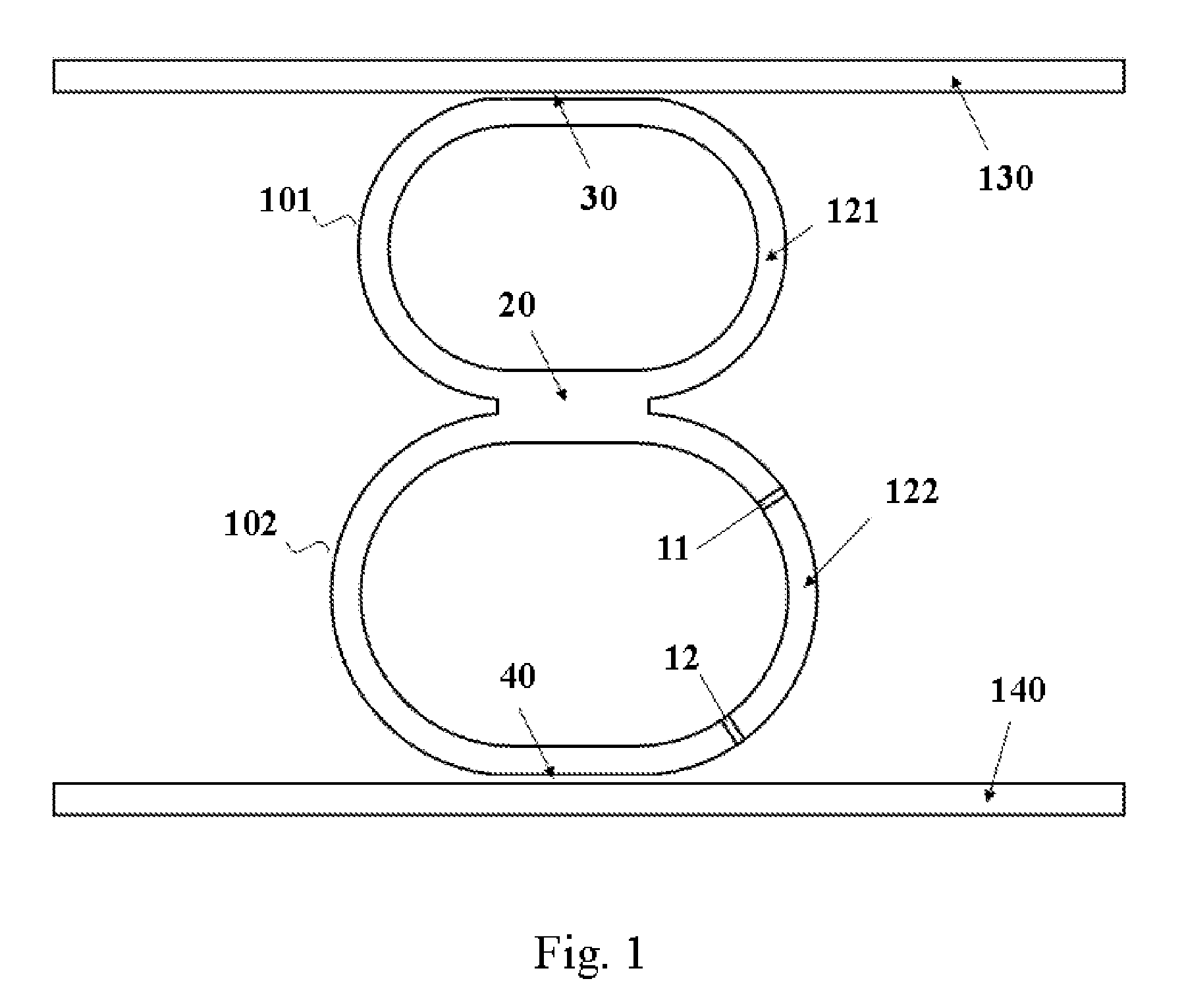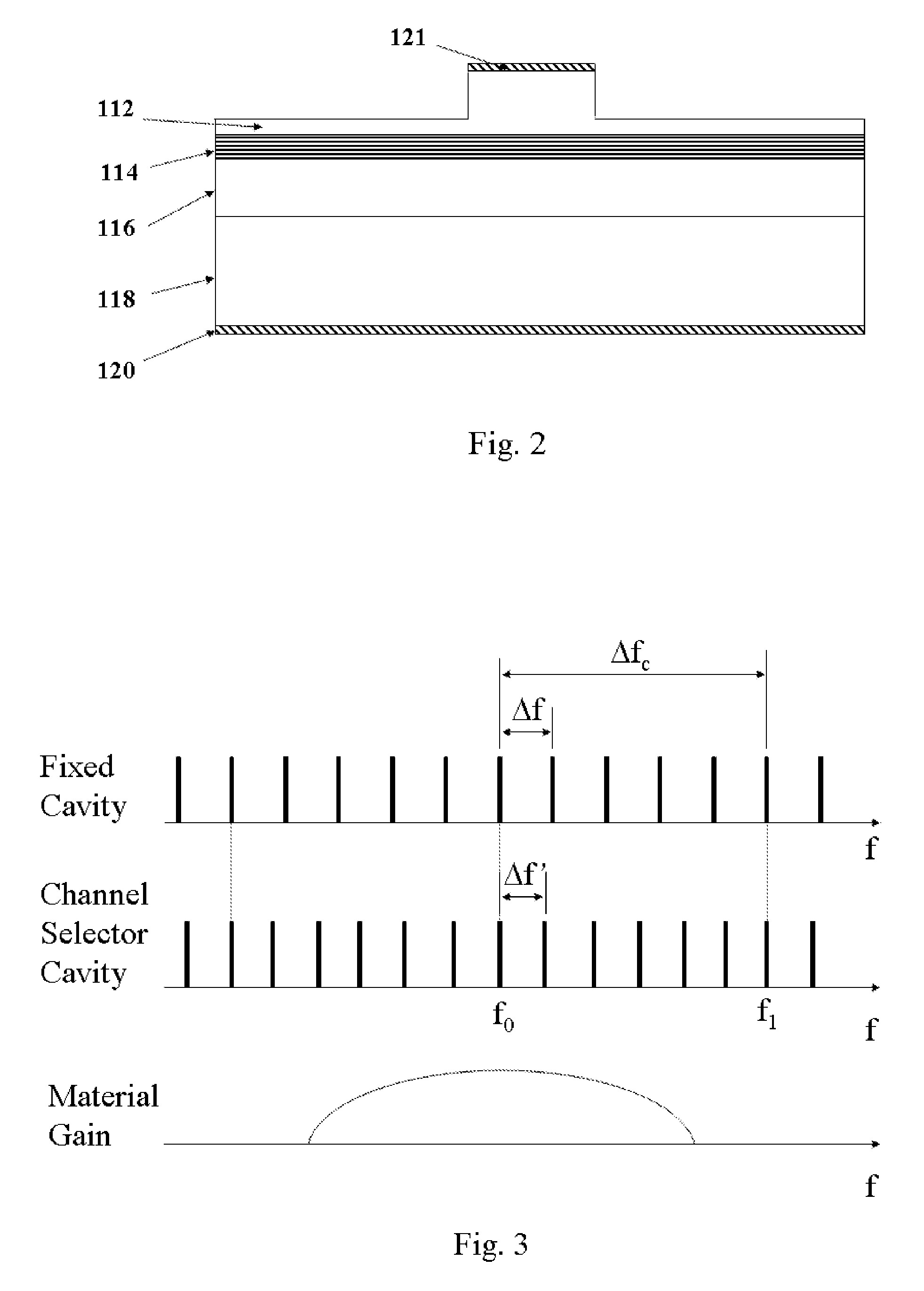Wavelength switchable semiconductor laser using half-wave coupled active double-ring resonator
a semiconductor laser and active double-ring resonator technology, applied in semiconductor lasers, optical elements, instruments, etc., can solve the problems of reducing fabrication yield, wavelength tuning requires complex electronic circuits, and the tuning range of such lasers is limited to about 10 nm, and achieve the effect of optimizing the single-mode selectivity of lasers
- Summary
- Abstract
- Description
- Claims
- Application Information
AI Technical Summary
Benefits of technology
Problems solved by technology
Method used
Image
Examples
Embodiment Construction
[0029]FIG. 1 shows the top view of a wavelength switchable semiconductor laser using half-wave coupled ring resonators in accordance with one embodiment of the present invention. The laser consists of two waveguide ring resonators 101 and 102, weakly coupled to each other via a half-wave optical coupler 20 with a predetermined coupling coefficient so that a small amount of light is coupled from one resonator to the other with a certain relative phase. The detail of the half-wave optical coupler is described later. At least one of the output couplers 30 and 40 is used to couple the laser emission from the ring resonators to at least one of the output waveguides 130 and 140. At least one electrode 121 is deposited on top of the ring resonator 101 and a portion of the ring resonator 102 to inject an essentially fixed current to produce optical gain for the laser. Another electrode 122 is deposited on top of the remaining portion of the ring resonator 102 to apply a variable current or ...
PUM
 Login to View More
Login to View More Abstract
Description
Claims
Application Information
 Login to View More
Login to View More - R&D
- Intellectual Property
- Life Sciences
- Materials
- Tech Scout
- Unparalleled Data Quality
- Higher Quality Content
- 60% Fewer Hallucinations
Browse by: Latest US Patents, China's latest patents, Technical Efficacy Thesaurus, Application Domain, Technology Topic, Popular Technical Reports.
© 2025 PatSnap. All rights reserved.Legal|Privacy policy|Modern Slavery Act Transparency Statement|Sitemap|About US| Contact US: help@patsnap.com



